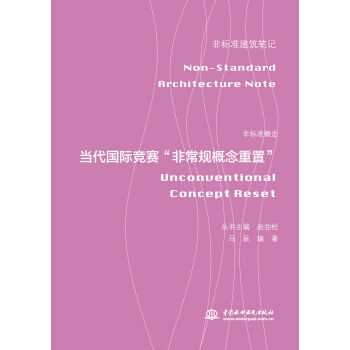

具体描述
产品特色
内容简介
《京都·大阪·神户名建筑地图(不一样的旅行)》精选关西27个地区、50条线路,从另一个角度介绍日本建筑史。作者化身为“建筑侦探”,追寻建筑的背景,分析建筑的风格,并备注游览的参考时间、消耗热能,帮助读者高效游览著名建筑。作者简介
圆满字洋介昭和三十五年(1960)出生于日本大阪府。京都工艺纤维大学建筑学科毕业。曾任职于富家建筑事务所、居住生活研究所。现为圆满字建筑事务所董事长。专事建筑修缮和复原。兼任京都精华大学、摄南大学等兼职教师。著有《隐歧之岛旅途素描》(大龙堂书店2010年发行)等。
译者简介
李建华,国际关系学院日语专业教授,硕士研究生导师。著有《日语词汇学》(知识产权出版社,2012)、《日文论文写作》(知识产权出版社,2013)、《现代日语基础语法》(合著)(北京大学出版社,2004)等。译著有《图说日本服饰史》(清华大学出版社,2016)、《能为建筑史做些什么:街区的调查与营造》(清华大学出版社,2016)、《能从建筑史中发现什么:日本文化的美与心》(清华大学出版社,2016)、《日本建筑与生活简史》(清华大学出版社,2016)等。
目录
京都
京都交通图 002
京都地区图 003
洛中地区 004
御苑西北地区 022
洛东地区 032
东山地区 050
蹴上地区 064
本愿寺地区 069
紫野地区 078
洛北地区 084
洛南地区 089
大阪
大阪交通图 096
大阪地区图 097
船场地区 098
南部地区 116
西区地区 122
北部地区 136
上町地区 145
上本町地区 150
天王寺地区 160
淀川区地区 171
大川地区 176
泉北地区 186
泉南地区 192
神户
(含大阪府池田市)
神户交通图 202
神户地区图 203
池田地区 204
尼崎地区 208
西宫地区 213
芦屋地区 217
神户东滩地区 222
神户滩地区 226
神户中央地区 230
索引 248
结语 254
前言/序言
序 言
让我们先来说一说游览著名建筑的注意事项。
首先,不能触碰。建筑物的内部自不必说,其外部也是不能触碰的,因为触碰可能导致污染或损坏。特别是在游览住宅等建筑物内部时,一定要将旅行背包放下来。因为有很多情况是旅行包触碰到物件而导致其损坏。
其次,不要涉足私人领地。即使是对外租赁的建筑也不能随意进入。这其中不仅涉及法律问题,还往往会给建筑物中的居民带来麻烦。常常出现的错误是为了拍摄而进入相邻的停车场,然而停车场其实也属私人领地。
最后,摄影时要注意不涉及个人隐私。总体来说可以拍摄的只是公共道路上可看到的部分。拍摄建筑物内部必须得到许可。特别需要注意的是,百货店内部和法院等很多地方都是禁止拍摄的。
下面两点是关于使用本书的注意事项。
首先需要注意的是书中的“俚语”。书中使用了许多类似“大阪罗马式建筑”“装饰分解”“爵士系列建筑”等词汇,这些都是我个人的创造,在其他场合是无法通用的。
其次是书中的数据均出自下面所列举的书籍。由于数据因资料不同而不同,因此在网络上是非常混乱的。为了避免以讹传讹,引用时一定要标注出处。
最后我要感谢我的妻子,每当外出采访,她总是为我备好盒饭。我就是在品尝着妻子盒饭的快乐中,完成了烈日炎炎下的采访工作的。老婆,谢谢了。
圆满字洋介
2011年9月
用户评价
一直以来,我都对古韵十足的日本建筑情有独钟,尤其是那些承载着历史故事的京都、大阪和神户。然而,市面上关于这三个城市的旅游指南,大多聚焦于寺庙、神社、购物和美食,很少有能深入挖掘城市建筑灵魂的。偶然间翻阅到《京都·大阪·神户名建筑地图(不一样的旅行)》这本书,我被它“不一样的旅行”的宣传语深深吸引。拿到手后,翻开目录,立刻就找到了我一直寻找的那份期待。它不像那些流水账式的攻略,而是将视角精准地对准了这三个城市最具代表性的建筑群,并且用一种我从未在旅游书中见过的细致和温度去呈现。 我尤其对书中关于京都的部分印象深刻。书中的京都,不是只有清水寺的二年坂三年坂,也不是只有祇园的艺伎风情。它深入挖掘了那些隐藏在街巷深处的町屋,那些曾经是商贾居住、经营生计的木质建筑,它们如何巧妙地利用空间,如何体现出“间”的日式美学,如何与自然融为一体。书中对一些老宅邸的介绍,不仅仅是简单的年代、风格描述,更融入了建筑背后的家族故事,甚至是当时的生活场景,仿佛能听到那些古老木屋中传过的笑语和叹息。我记得书中有一段对西本愿寺的介绍,它没有停留在宏伟的建筑本身,而是细致地描绘了其飞云阁的独特风格,以及周围庭园如何随着四季变换呈现出不同的诗意,让人感受到一种宁静致远的力量。这种将建筑与文化、历史、生活融为一体的呈现方式,让我觉得这不仅仅是一本地图,更像是一部厚重的建筑史诗,等待我去细细品读。
评分神户,这座美丽的海滨城市,在这本书中被赋予了新的生命。我之前对神户的印象,更多的是其浪漫的海港风情和北野异人馆的异国情调。而这本书则将我的视野拓展到了更广阔的领域。它不仅细致地介绍了北野异人馆群的建筑特色,更深入地挖掘了这些建筑背后的文化交流和历史渊源。 更让我感到欣喜的是,书中还关注了神户港的现代建筑和公共空间。那些充满设计感的建筑,与历史遗迹和谐共存,共同构成了神户独特的城市景观。书中对建筑材料、色彩、线条的细腻描绘,让我仿佛能感受到海风的吹拂,感受到这座城市在现代与历史之间找到的平衡。它让我明白,神户不仅仅是一个旅游胜地,更是一个充满活力的、不断发展的城市。
评分对于大阪,我一直认为它是一个充满活力的现代都市,但这本书让我看到了它隐藏在现代喧嚣下的历史印记。书中对大阪城天守阁的介绍,不仅仅停留在其宏伟的外观,更是深入地探讨了其作为日本统一的象征意义,以及不同时期改建所留下的痕迹。这种对历史的纵深挖掘,让我对这座城市有了更深刻的理解。 让我印象深刻的是,书中对大阪一些近代建筑的介绍,例如那些曾经作为银行和商社的洋式建筑。它们在时光的洗礼下,依然散发着独特的韵味,见证着大阪近代化的进程。书中的文字,带着一种深情的笔触,仿佛在讲述着那些建筑曾经的辉煌,以及它们如何在现代都市中扮演着新的角色。它让我明白,即使是现代都市,也应该有对历史的尊重和对过往的记忆。
评分我一直认为,一本好的旅游书,不仅仅是告诉“去哪里”,更重要的是教会“怎么看”。《京都·大阪·神户名建筑地图(不一样的旅行)》无疑做到了这一点。在阅读这本书之前,我虽然也去过京都、大阪、神户,但大多是走马观花,看个热闹。这本书提供的“不一样的旅行”视角,让我学会了用建筑的语言去理解一个城市。书中对一些建筑的“解剖式”分析,比如对某个屋檐的构造、某扇窗户的设计、某个庭院的布局,都让我对建筑的细节有了前所未有的关注。 我记得书中有一段对京都某处町屋的介绍,它详细地解释了“坪庭”的设计理念,以及如何在这种狭小的空间里引入自然光线和通风,营造出舒适的生活环境。这种对细节的挖掘,让我感觉作者不仅仅是在介绍建筑,更是在传授一种观察和理解城市的方法。它鼓励读者放慢脚步,去留意那些被忽略的角落,去发现隐藏在平凡中的不凡。这种“慢旅行”的理念,贯穿全书,让我觉得这本书的价值远不止于提供一个行程,它更是在培养一种对生活和文化更深层次的感知能力。
评分我一直对日本的建筑美学充满好奇,尤其是那种将自然与人文完美融合的东方韵味。这本书的出现,简直像是一场及时雨,它为我打开了一扇通往京都、大阪、神户建筑灵魂深处的大门。在阅读的过程中,我发现作者不仅仅是罗列名胜古迹,而是带着一种对历史和文化的敬畏之心,去挖掘每一个建筑背后的故事和意义。 书中对京都传统町屋的详细介绍,让我对“京町家”有了全新的认识。那些木质结构、瓦片屋顶、纸拉门,看似简单,却蕴含着精妙的结构和深远的哲学。它讲述了町屋如何适应气候,如何合理利用空间,以及如何体现出居民的审美情趣。书中的插图和照片,更是锦上添花,将那些古老的町屋仿佛带到了我的眼前,让我能清晰地感受到它们的生命力。它不仅仅是文字的描述,更是一种视觉的盛宴,一种跨越时空的对话。
评分而神户,这座在中国读者心中总带着一份亲切感的海滨城市,在这本书中也展现出了不同于以往的魅力。我一直以为神户的建筑风格,无非是北野异人馆的西洋风情。然而,《京都·大阪·神户名建筑地图(不一样的旅行)》则将我的视野拓展到了更多维度。书中对北野异人馆群的介绍,不仅仅是列举了多少座房子,而是细致地剖析了不同国家(例如英国、荷兰、美国)的建筑风格是如何在日本的土地上生根发芽,并且融合出独特的风貌。它讲述了这些建筑背后的历史,关于外国商人的生活,关于这座城市如何成为东西方文化交汇的窗口。 更令我惊喜的是,书中还重点介绍了神户港周边的现代建筑,以及那些经历过阪神大地震后重建的建筑。它没有回避历史的伤痛,而是以一种积极的态度,展现了城市在灾难中展现出的坚韧和重生。比如对神户海洋博物馆的介绍,其独特的帆船造型,以及作为港口城市标志的象征意义,都让我对这座城市有了更深的理解。书中对于建筑材料、空间布局的细致描述,让我即使身处千里之外,也能感受到神户独特的港口气质和现代都市的活力。这本书让我觉得,神户不仅仅是一个旅游目的地,更是一个充满故事和生命力的城市。
评分我一直认为,旅行的意义在于发现,在于体验,而一本好的旅游书,则能引导我们发现更深层次的美。这本书的“不一样的旅行”的理念,正是我一直所追求的。它鼓励读者放慢脚步,去用心感受每一个建筑的细节,去探寻每一个建筑背后的故事。 书中对京都传统町屋的讲解,让我学会了如何欣赏那些隐藏在细节中的美学。例如,它会介绍“坪庭”的设计如何将自然引入室内,如何通过“障子”和“襖”来灵活分割空间,这些细节的解读,让我对日本传统建筑有了更深的理解。它不仅仅是关于建筑的介绍,更是关于一种生活方式的解读,一种与自然和谐共处的智慧。
评分神户,这座我一直以为充满浪漫的海滨城市,在这本书的描绘下,展现出了更丰富的层次。我之前对神户的印象,更多的是北野异人馆的异国风情。而这本书则将我的视野拓展到了神户港的现代建筑和公共空间。它细致地描绘了这些建筑如何与自然环境相融合,如何成为城市景观的点睛之笔。 书中对神户港周边建筑的介绍,让我感受到了这座城市在现代与历史之间的独特张力。它不仅仅是介绍建筑的造型,更是深入地挖掘了这些建筑在城市发展中所扮演的角色,以及它们如何与当地的文化和生活方式相融合。它让我明白,神户不仅仅是一个旅游目的地,更是一个充满活力、不断创新、并且珍视历史的城市。
评分我对大阪的印象,一直是那个充满活力的“天下厨房”。但这本书让我看到了大阪隐藏在现代都市下的历史脉络。它不仅仅是介绍了大阪城天守阁,更是深入地挖掘了那些在近代化进程中留下的洋式建筑。这些建筑,虽然历经风雨,但依然散发着典雅的气质,仿佛在讲述着大阪近代商业发展的辉煌历史。 书中对这些建筑的描述,不仅仅是风格和年代的简单罗列,而是带着一种深情的笔触,去描绘它们曾经的功能,去想象它们曾经承载的故事。它让我明白,即使是现代都市,也应该有对历史的敬畏,对过往的记忆。这种对历史细节的关注,让我觉得这本书的价值不仅仅在于提供一个行程,更在于传递一种对城市文化的深刻理解。
评分接着翻到大阪的部分,这本书并没有把我带入那些摩天大楼的现代都市丛林,而是把目光投向了大阪历史的脉络。我之前对大阪的印象,更多是“天下厨房”的美食之都,但这本书让我看到了大阪不同的一面——一个拥有厚重工业遗迹和独特建筑美学的城市。书中对大阪城天守阁的介绍,不仅仅是其作为丰臣秀吉权力的象征,更深入地分析了其不同历史时期的重建和改造,以及在现代城市景观中的独特地位。更让我惊喜的是,书中还花了相当大的篇幅介绍了那些在经济高速发展中被保留下来的近代洋风建筑,比如曾是大阪商船公司的旧址,那些红砖与石柱的组合,散发出浓浓的怀旧气息,仿佛能看到当年的繁华景象。 书中对大阪中之岛区域的建筑群的描绘,让我觉得像是打开了一个新世界。那些曾经作为银行、邮局、政府机构的建筑,在经历了时光的洗礼后,依然散发着庄重而典雅的气质。书中对这些建筑的线条、比例、材质的分析,让我这个建筑门外汉也能感受到其中的精妙之处。特别是对中央公会堂的介绍,其华丽的内部装饰和宏伟的穹顶,让我仿佛身临其境,感受到那个时代的艺术气息。这本书让我明白,即使是商业繁华的大阪,也隐藏着如此丰富的建筑宝藏,等待着有心人去发现和欣赏。
相关图书
本站所有内容均为互联网搜索引擎提供的公开搜索信息,本站不存储任何数据与内容,任何内容与数据均与本站无关,如有需要请联系相关搜索引擎包括但不限于百度,google,bing,sogou 等
© 2025 book.coffeedeals.club All Rights Reserved. 静流书站 版权所有




![天津大学古建筑测绘历程/天津大学社会科学文库 [Striving for perfection: history of architectural heritage recording] pdf epub mobi 电子书 下载](https://pic.windowsfront.com/12277786/5a420898N70f63f46.jpg)





![装配式混凝土建筑设计/装配式建筑培训系列教材 [Design of Precast Concrete Building] pdf epub mobi 电子书 下载](https://pic.windowsfront.com/12278925/5a782450N7e24f8e1.jpg)






![设计师的材料清单:室内篇 [Designers' Material List:Interior] pdf epub mobi 电子书 下载](https://pic.windowsfront.com/12279406/5a6afc81N4b20adc9.jpg)


